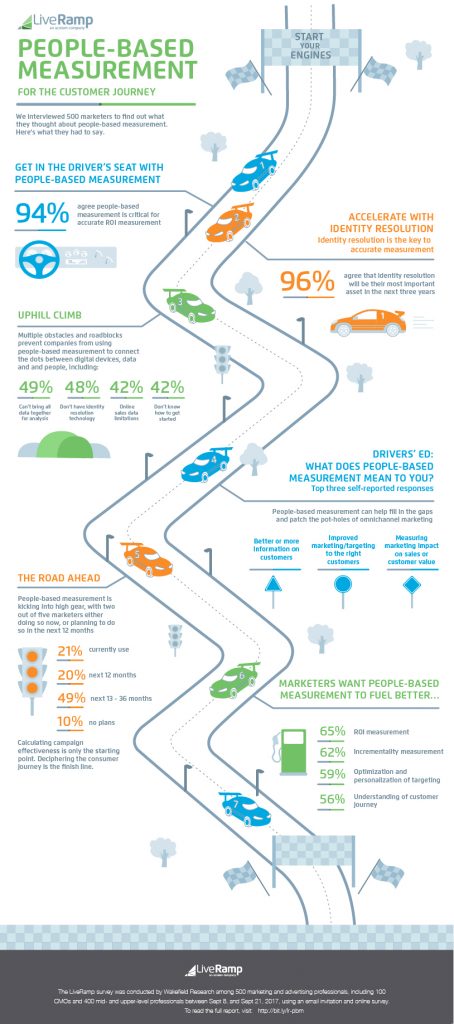Jeff Smith
CMO and GM of Brands, LiveRamp
You can’t deny that Omnichannel Customers are the latest emerging reality. As omnichannel marketing begins to take prominence in retail, marketers are pressed hard to target customers that are real and measure the results of engagement in real-time. In 2018, people-based data management platforms hold the key to delivering true omnichannel experiences across digital channels. Jeff Smith, Chief Marketing Officer and General Manager of Brands at LiveRamp shares his insights on how improvements in people-based marketing would impact the performance of digital campaigns and personalized brand messaging.
Html code here! Replace this with any non empty text and that's it.
Why does the omnichannel marketing landscape still look disconnected?
Omnichannel marketing can be thought of as the ability to engage consumers seamlessly across channels, or even as “a world without channels.” After all, consumers don’t think of themselves as being in a “channel,” they think of themselves as watching TV, visiting a store, browsing on their phone or picking up the mail. One of the primary reasons why channels matter to marketers is the technological barriers that exist in connecting and moving data about people and devices across channel: this prevents them from creating a more seamless engagement with consumers. Omnichannel marketing “looks disconnected”/has not reached its full potential to deliver a better consumer experience because 1. lacking the ability to connect people to devices and data collected across any channel, you cannot create an omnichannel persona and 2. lacking the ability to activate this persona in any channel or direction needed, you cannot take advantage of this omnichannel understanding of the consumer. For example:
- Moving data from one offline channel to another (for example, customer service to telesales)
- Moving data from offline channels into digital channels–a process the industry has come to call “onboarding” (For example, using CRM data to target in display channels)
- Moving data from one digital channel to another (for example, mobile to addressable TV)
- Moving data from a digital channel back to the offline world (for example, using observations of behavior on your website to inform a direct mail campaign)
Would the improvements in people-based marketing enhance adoption of verification and viewability technologies?
To the extent that you are able to determine if an actual person is associated with say a cookie or mobile id, then this could potentially help verify that an impression is “real.” It is not a panacea however for the “bot” issue, as malevolent parties will continue to work around whatever new systems are put in place. Since viewability and brand safety are more related to the context a person is in, as opposed to whether or not a digital identifier is actually a person, there is no obvious impact there.
How do you see marketers and advertisers optimizing data to create personalized brand messaging for better campaign effectiveness and positively influencing the outcome of customer journey?
Some of the most forward-thinking marketers we work with have already started the process of leveraging identity resolution – the ability to connect people, devices and data – to unify all of the consumer data they have access to at a personal level – first party data from their offline and digital systems, data available from third parties and data available through 2nd party “pooling” relationships with partners and even sometimes competitors. They then use this omnichannel view of the consumer to analyze aspects of the consumer journey, identifying key inflection points in that journey. These points in time are then targeted with personalized messaging via people-based channels in order to deliver the proverbial “right message to the right person at the right time.”
What prevents marketers from leveraging people-based marketing platforms to improve overall business value?
I think the right question to ask is, “what prevents marketers from fully leveraging people-based marketing platforms?” It’s fairly straightforward to use identity resolution to power marketing in a single channel, but the big win is a shift to omnichannel marketing, in which brands engage with consumers seamlessly across channels. The challenge here is that brands aren’t organized against the consumer journey, but rather around channel silos (the display team, the direct mail team, the search team, the TV team, etc.) that are not generally incented to care about what happens in channels other than their own. Hence, they struggle to take advantage of the omnichannel capabilities the technology creates.
Thanks for chatting with us, Jeff.
Stay tuned for more insights on marketing technologies. To participate in our Tech Bytes program, email us at news@martechseries-67ee47.ingress-bonde.easywp.com
Also read: Omnichannel TechBytes with Jeff Smith, CMO, LiveRamp












